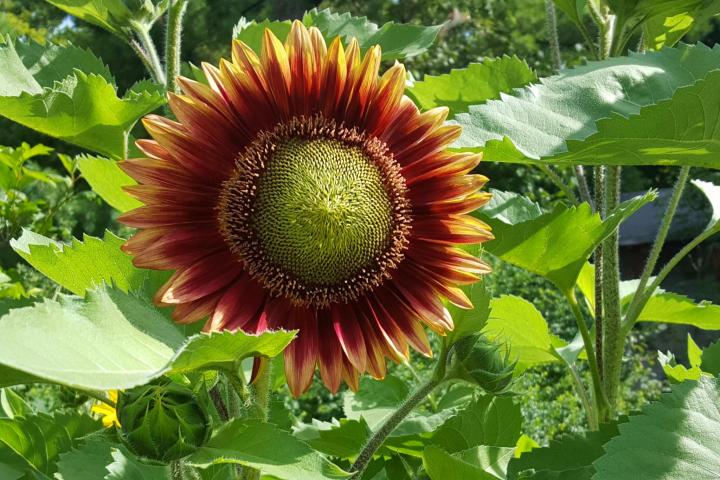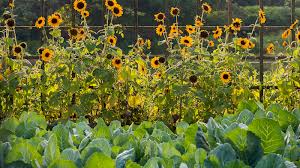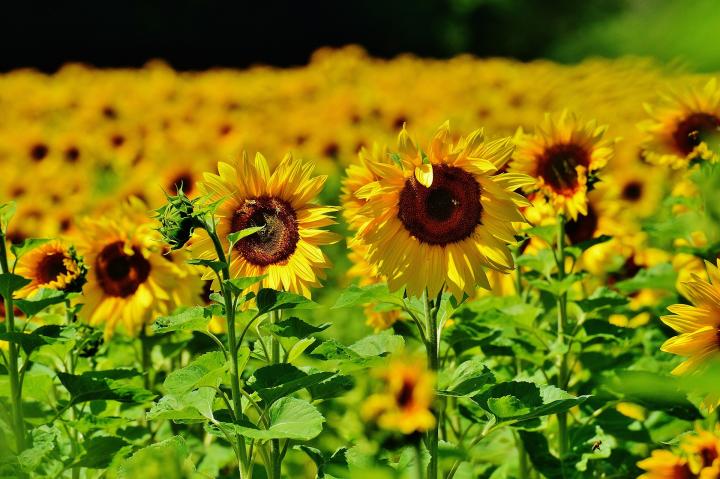Botanical name: Helianthus annuus

The sunflower (Helianthus annuus) is an annual plant with a sizeable daisy-like flower face. Its scientific name comes from the Greek words helios (“sun”) and anthos (“flower”). e excellent cut flowers, and many attract bees, birds, and butterflies.
The flowers come in many colors (yellow, red, orange, maroon, brown), but they are commonly bright yellow with brown centers that ripen into heavy heads filled with seeds. Sunflowers make excellent cut flowers, and many attract bees, birds, and butterflies.
Sunflowers are heliotropic, which means that they turn their flowers to follow the movement of the Sun across the sky from east to west and then return at night to face the east, ready again for the morning sun.
There are many varieties of sunflowers available, so there’s bound to be one that fits your garden. Choose between those with branching stems or single stems, those that produce ample pollen for pollinators or are pollen-free (best for bouquets), those that stay small or tower above the rest of the garden, or those that produce edible seeds!
A reasonably fast-growing flower for its size, most sunflower varieties mature in only 70 to 95 days. The largest sunflower varieties grow to over 16 feet tall, while smaller varieties have been developed for small spaces and containers and rarely grow larger than a foot tall!

The flower heads can reach over 12 inches in diameter within the large-seeded varieties.
Sunflowers grow best in locations with direct sunlight (6 to 8 hours per day); they require long, warm summers to flower well. Shelter from strong winds, for example, along a fence or near a building—helps as they mature. Larger varieties may become top-heavy, and a strong wind can topple them.

Choose a location with well-draining soil. The planting spot shouldn’t pool with water after it rains. Otherwise, sunflowers aren’t too picky about soil, but the soil shouldn’t be too compacted for the best results.
They have long tap roots that need to stretch out; in preparing a bed, dig down or till 2 feet in depth and about 3 feet across. They’re not too fussy when it comes to soil pH, either. Sunflowers thrive in slightly acidic to somewhat alkaline soil (pH 6.0 to 7.5).

I love sunflowers.
I love sunflowers. Are they easy to grow?
Yes, they are fairly easy to grow. I start mine in a pot then transplanted them to the ground when they are about 12 inches tall. Make sure to water them and that they get plenty of light.